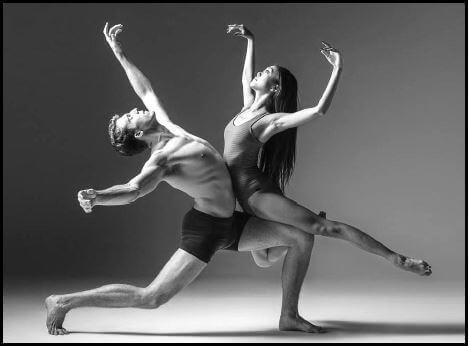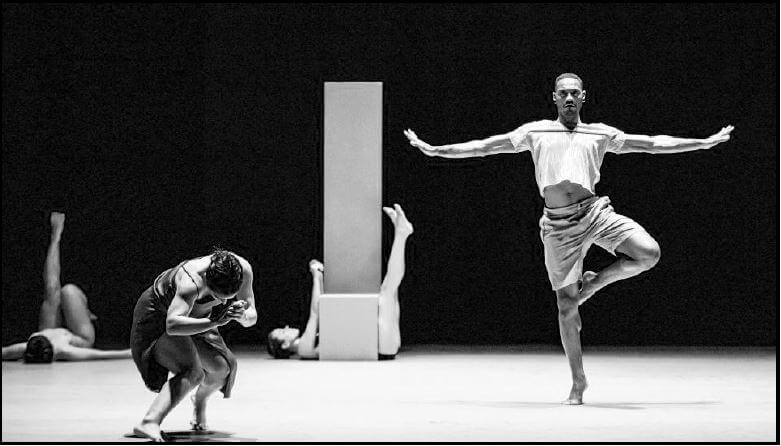DANCE STUDIES GRADE 12 QUESTIONS - NSC PAST PAPERS AND MEMOS NOVEMBER 2021
Share via Whatsapp Join our WhatsApp Group Join our Telegram GroupINSTRUCTIONS AND INFORMATION
- This question paper consists of TWO sections with EIGHT questions in total.
- SECTION A: SAFE DANCE PRACTICE AND HEALTH CARE (60 marks)
- Answer ALL FOUR questions in this section.
- You have a choice between QUESTION 1.2 and QUESTION 1.3. If you answer both questions, only the FIRST answer will be marked.
SECTION B: DANCE HISTORY AND LITERACY (90 marks) - Answer ALL FOUR questions in this section.
- You have a choice between QUESTION 6.2 and QUESTION 6.3. If you answer both questions, only the FIRST answer will be marked.
- Number the answers correctly according to the numbering system used in this question paper.
- Read each question carefully and take note of what is required.
- Read the ACTION VERB at the start of each question to see what is required.
EXAMPLES OF ACTION VERBS USED IN THE QUESTIONS:
LOW-LEVEL QUESTIONS: choose, find, name, match, define, true or false
MEDIUM-LEVEL QUESTIONS: describe, explain, elaborate
HIGH-LEVEL QUESTIONS: analyse, evaluate, argue, give opinion - You may do rough planning in the ANSWER BOOK. Draw a line through any work that should NOT be marked.
- You will be assessed on your ability to:
- Write in one language only
- Organise and communicate information clearly
- Use the specific format asked for in certain questions
- Use specialist dance terminology, where appropriate
- Write neatly and legibly.
QUESTIONS
SECTION A: SAFE DANCE PRACTICE AND HEALTH CARE
QUESTION 1: INJURIES
1.1 Indicate whether the following statements are TRUE or FALSE. Write only 'true' or 'false' next to the question numbers (1.1.1 to 1.1.5) in the ANSWER BOOK. If the statement is FALSE, write down why you think this is so.
1.1.1 It is no big deal to miss the warm-up at the beginning of class. (1)
1.1.2 It is important to work within your body's range of movement in order to prevent injuries. (1)
1.1.3 Bouncing while stretching is safe and helps the muscles stretch further. (1)
1.1.4 Good posture means you must arch your back and relax your core. (1)
1.1.5 In order to land safely from a jump, you need to land through the feet and bend your knees. (1)
NOTE:
You have a choice between QUESTION 1.2 and QUESTION 1.3.
Answer only ONE of these questions.
1.2 Create a mind map. You may use an entire single or double page for your mind map in the ANSWER BOOK.
Your mind map must explain ways in which dancers can prevent injuries. Include the following information:
- The appropriate dance environment
- The role of the teacher
- The importance of good lifestyle choices
- Nutrition and hydration
- Two marks will be awarded for a creative layout and presentation of the mind map (10)
OR
1.3 Create a wall chart. You may use an entire single or double page for your wall chart in the ANSWER BOOK.
Your wall chart must explain the following information:
- The different types of treatments dancers can use for injuries
- The effects a serious injury could have on a dancer
- Two marks will be awarded for a creative layout and presentation of the wall chart (10)
[15]
QUESTION 2: COMPONENTS OF FITNESS
2.1 Complete the following sentences by using the word(s) provided in the list below. Write only the word(s) next to the question numbers (2.1.1 to 2.1.6) in the ANSWER BOOK.
| static stretching; cardiovascular endurance; strength; aerobic; neuromuscular skills; dynamic stretching |
2.1.1 Exercises where one is continuously moving are called … (1)
2.1.2 The ability of the brain to send messages to the body instantly is called … (1)
2.1.3 The ability of the heart and lungs to pump oxygen-rich blood to the muscles during strenuous activity for a period of time is called … (1)
2.1.4 The ability of a muscle to exert force against gravity is called … (1)
2.1.5 When you stretch in a slow and controlled manner, it is called … (1)
2.1.6 … involves performing movements that move through the full range of motion in the joints. (1)
2.2 Explain how a lack of muscular strength could affect a dancer's performance. (4)
2.3 Explain how cardiovascular and/or muscular endurance could improve a dancer's performance. (4)
2.4 Study the image below and answer the following questions.
[Source: http://www.peddecordphoto.com/galleries/portfolio-studio]
2.4.1 Identify THREE neuromuscular skills being used. (3)
2.4.2 Analyse how EACH skill you have identified in QUESTION 2.4.1 is being used. (3)
[20]
QUESTION 3: GENERAL HEALTH CARE
3.1 Choose a description from COLUMN B that matches the term in COLUMN A. Write only the letter (A–D) next to the question numbers (3.1.1 to 3.1.4) in the ANSWER BOOK.
| COLUMN A | COLUMN B |
| 3.1.1 Body image 3.1.2 Peer pressure 3.1.3 Mental health 3.1.4 Stereotyping | A feelings of having to change in order to fit in with those around you B managing thoughts and feelings within changing circumstances C labelling and putting a person into a specific category D thoughts and feelings about your physical appearance |
(4 x 1) (4)
3.2 Explain how the following activities could help a dancer manage stress and anxiety:
3.2.1 Breathing exercises (3)
3.2.2 Talking to a peer (3) [10]
QUESTION 4: DANCE PERFORMANCE
4.1 Explain how the subject Dance Studies could develop the following skills:
- Problem-solving
- Communication
- Creativity (3 x 2)
4.2 Identify THREE performance skills.
(Do NOT include strength, flexibility, core stability or endurance in your answer to QUESTION 4.2.)
4.3 Explain how you could improve your dance performance by using EACH of the skills identified in QUESTION 4.2.
4.4 Commitment is an important factor in dance.
Argue the statement above.
[15]
TOTAL SECTION A: 60
SECTION B: DANCE HISTORY AND LITERACY
QUESTION 5: IMPROVISATION AND CHOREOGRAPHY
5.1 Various options are provided as possible answers to the following questions. Choose the answer and write only the letter (A–D) next to the question numbers (5.1.1 to 5.1.6) in the ANSWER BOOK.
5.1.1 A recognisable tune in music is called a …
- melody.
- pitch.
- theme.
- pace. (1)
5.1.2 A high point in music is called a/an …
- accent.
- rhythm.
- variation.
- climax. (1)
5.1.3 Emphasising a weaker beat in music is called …
- beat.
- syncopation.
- dynamics.
- duration. (1)
5.1.4 Two or more rhythms played at the same time is called …
- sequencing.
- tempo.
- polyrhythm.
- musicality. (1)
5.1.5 The number of beats in each bar of music is called the …
- phrase.
- style.
- harmony.
- time signature. (1)
5.1.6 The unique sound quality that makes an instrument or voice different to other sounds is called …
- timbre.
- motif.
- genre.
- duration. (1)
5.2 Explain how a choreographer could use production elements to communicate the theme/story/meaning of a dance work. (10)
5.3 Analyse how the dance elements SPACE and FORCE are being used in the image below. (6)
[Source: www.momentmag.com]
5.4 Explain how you would interpret the image above if it was given to you as an improvisation stimulus in the dance class. (3)
[25]
QUESTION 6: DANCE LITERACY
6.1 Select and write down any FIVE words from the list below that describe the functions of dance in society. Justify why you think so.
| healing; career; education; recreation; expression; protest |
(5)
NOTE: You have a choice between QUESTION 6.2 and QUESTION 6.3.
Answer only ONE of these questions.
6.2 Write an essay explaining what makes your dance major unique/recognisable.
Name your dance major.
The following information could be included:
- The characteristics, principles, styles, techniques, etc. (15)
OR
6.3 Write an essay explaining the history and development of your dance major.
Name your dance major.
The following information could be included:
- The origins, eras, centuries, pioneers, influences, choreographers, sociopolitical contexts, etc. (15)
6.4 In your opinion, how has the Covid-19 pandemic changed dance as you know it? Substantiate your opinion. (5)
[25]
QUESTION 7: DANCE WORK
Choose ONE dance work that you studied in class from the prescribed list below.
| SOUTH AFRICAN CHOREOGRAPHERS | DANCE WORKS |
| Alfred Hinkel | Bolero – Last Dance OR Rain in a Dead Man's Footprint OR Cargo |
| Gregory Maqoma | Four Seasons OR Beauty Trilogy OR Skeleton Dry OR Somehow Delightful |
| Sylvia Glasser | Tranceformations |
| Veronica Paeper | Orpheus in the Underworld OR Carmen |
| Vincent Mantsoe | Gula Matari |
| Dada Masilo | Swan Lake OR Romeo and Juliet |
| Gary Gordon | Bessie's Head |
| Mavis Becker | Flamenco de Africa |
| Hazel Acosta | Blood Wedding |
| Carolyn Holden | Imagenes |
| INTERNATIONAL CHOREOGRAPHERS | DANCE WORK |
| Alvin Ailey | Revelations |
| Martha Graham | Lamentations OR Errand into the Maze |
| George Balanchine | Apollo OR Jewels |
| Christopher Bruce | Ghost Dances OR Rooster |
| Matthew Bourne | Swan Lake OR Cinderella |
| Pina Bausch | The Rite of Spring |
| William Forsythe | In the Middle, Somewhat Elevated |
| Mats Ek | Giselle OR Swan Lake OR Carmen |
| Rudi van Dantzig | Four Last Songs |
| Jiří Kylián | Wings of Wax OR Stamping Ground |
Write an informative ESSAY on the dance work you have selected.
Include the following information:
- The name of the dance work you have selected
- Intent, inspiration or reason for the dance work being created
- Story, synopsis or theme and how it was communicated
- Production elements and how it communicated the story/synopsis/theme
- Music/Accompaniment and how it contributed to the dance work
- Dance style(s) used
- Movement vocabulary used to communicate the story/intent/theme
- Symbolism used
- Your opinion on the relevance of the work now
[25]
QUESTION 8: CHOREOGRAPHER
Choose ONE choreographer that you studied in class from the list below.
| SOUTH AFRICAN CHOREOGRAPHERS | INTERNATIONAL CHOREOGRAPHERS |
| Alfred Hinkel | Alvin Ailey |
| Gregory Maqoma | Martha Graham |
| Sylvia Glasser | George Balanchine |
| Veronica Paeper | Christopher Bruce |
| Vincent Mantsoe | Mathew Bourne |
| Dada Masilo | Pina Bausch |
| Gary Gordon | William Forsythe |
| Mavis Becker | Mats Ek |
| Hazel Acosta | Rudi van Dantzig |
| Carolyn Holden | Jiří Kylián |
Prepare study notes on the choreographer you have selected.
Include the following information:
- Name the choreographer that you have selected
- Background information
- Dance training and career
- Achievements and recognition
- Contributions and relevance to dance and society
[15]
TOTAL SECTION B: 90
GRAND TOTAL: 150